MEC316 Renewable Energy WT Fundamentals and Aerodynamics Tutorial Questions
1/36
There's no tags or description
Looks like no tags are added yet.
Name | Mastery | Learn | Test | Matching | Spaced |
|---|
No study sessions yet.
37 Terms
What are the advantages of wind power?
Advantages: Sustainable, clean energy, no fuel transportation or storage, free source, available widely all over the world.
Explain the effects of the atmospheric boundary layer on wind power generation
Higher altitude has higher wind speed in the ABL. For rougher surfaces (urban) the free stream velocity is lower
Calculate the wind speed at a given height, knowing the wind speed at a reference height from the ABL power law
need to know speed at U10
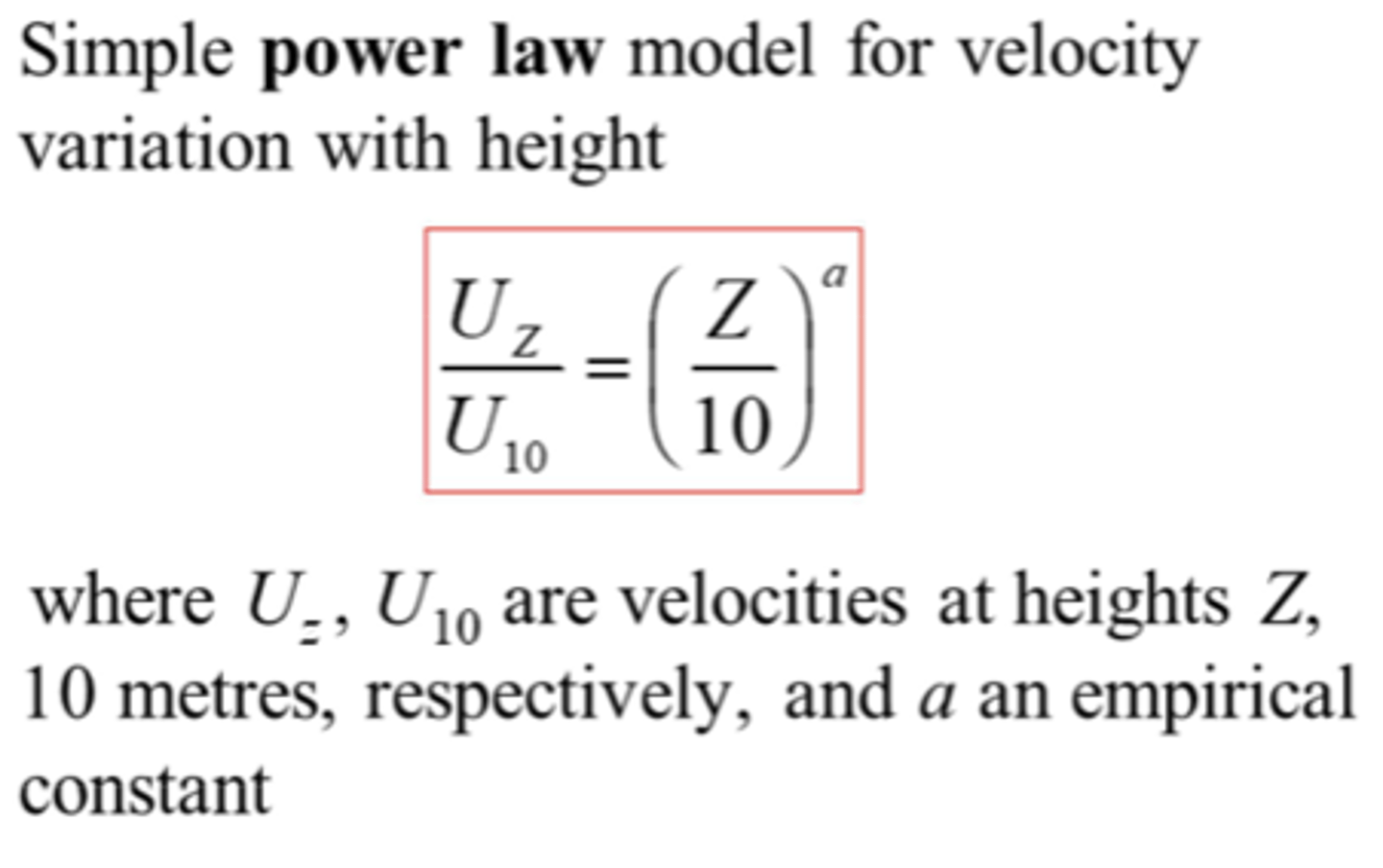
Differentiate the annual average mean wind speed and V50
The annual average mean is the mean wind speed across the year whereas the V50 is the wind speed that is exceeded in half of the time in a year
If V50 is doubled, how does the annual total energy in the wind change per square meter?
E is proportional to V^3 so (2)^3 = 8
Use the Weibull distribution to work out the annual duration between two wind speeds.
Use the graph to find the hours for each velocity and minus the bigger one from the smaller
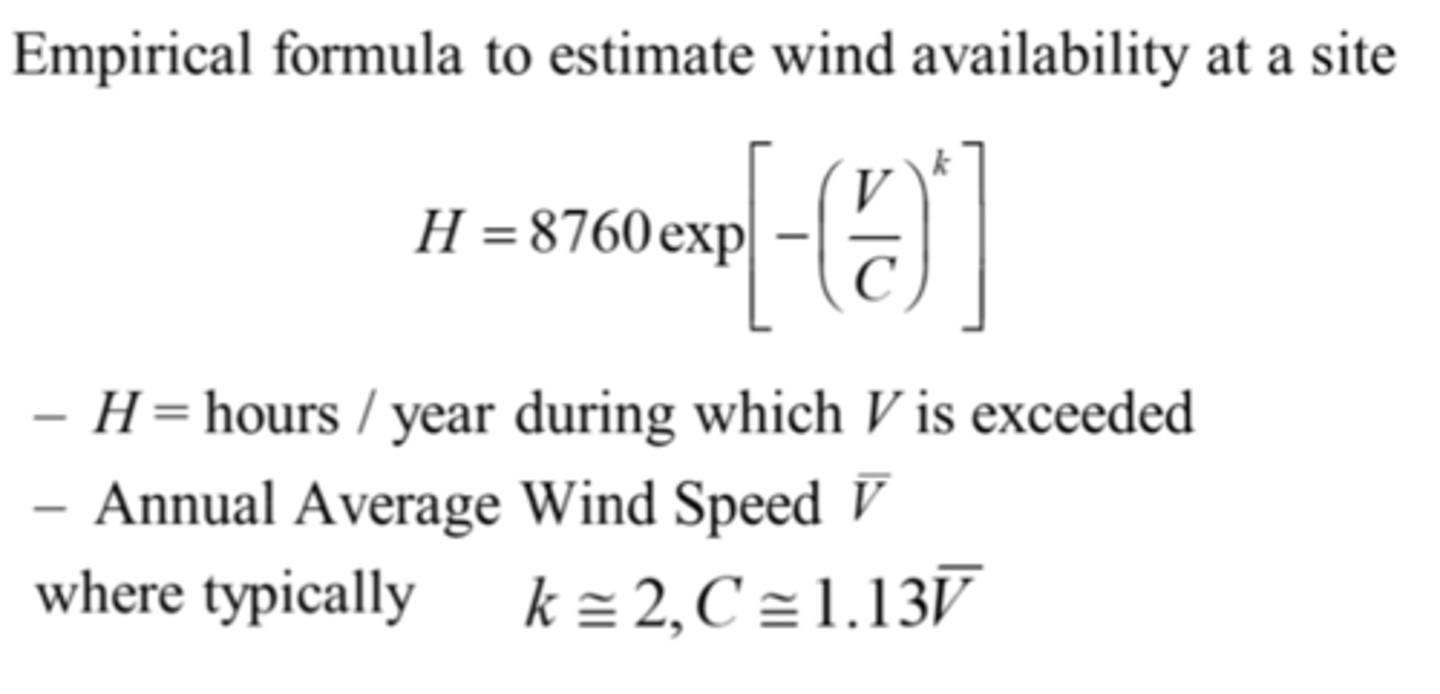
What are the disadvantages of wind power?
Disadvantages: Unpredictable, cost of turbine, integration and installation, environmental impact.
What are the non-dimensional parameters that affect the wind turbine power coefficient?
Power coefficient, Tip Speed ratio, Solidity, Reynolds Number.
Power Coefficient
Power extracted from wind/power available in wind

Tip Speed Ratio
Blade tip speed/wind speed

Solidity
Total blade area/Flow area swept by rotor

Reynolds Number

What are the main differences of HAWTs and VAWTs?
HAWTs - Horizontal axis, can only use wind aligned to the axis of rotation
VAWTs - Vertical axis, use cross-flow wind (perpendicular to axis of rotation)
What are the advantages of VAWT?
Advantages: Low speed but high torque, easier for maintenance, operates for wind from any directions, potentially quieter due to lower tip speed, manufacturing cost lower for straight blades
What are the disadvantages of VAWT?
Disadvantages: Drag type is not good for generating electricity, blades experience oscillatory forces which may cause vibration damage or fatigue, the machine is not self-starting, machine may need wires to hold it up
From the first principle, prove that the power in the wind per unit area is proportional to the wind speed cubed.
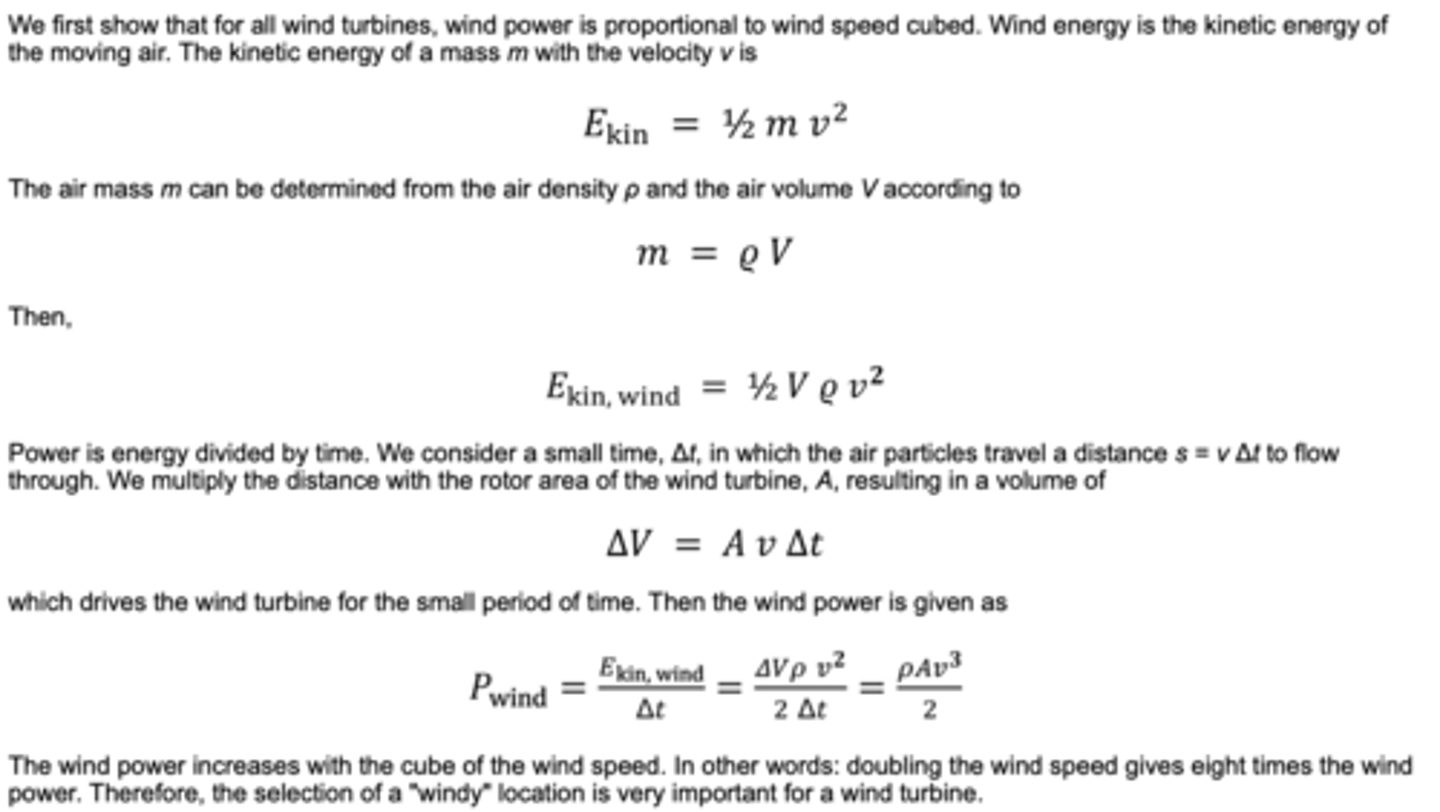
What is the theoretical upper limit of the energy that a wind turbine can extract from the kinetic energy in the wind?
Betz limit

Derive the Betz limit and state clearly the assumptions made in each step
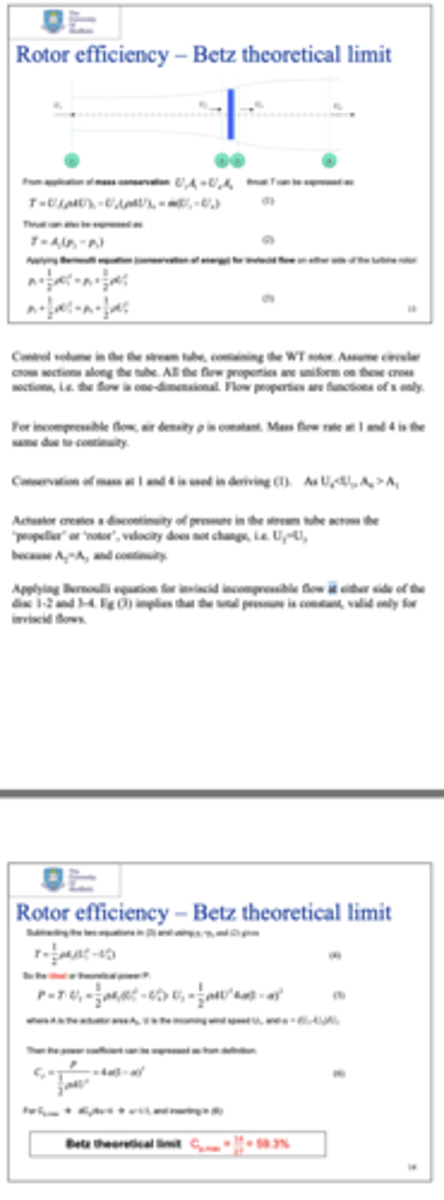
Why a drag-type VAWT is not desirable for harvesting wind energy
The turbine only extracts energy from half of the area swept by the rotor so has an extremely low efficiency.
Give reasons to explain why the performance of a drag-type VAWT is much lower than lift-type WTs
DT only extracts wind energy from half the area swept but LT extracts from the whole area. LT can have a tip speed ratio of higher than 1.
Describe the process of blade stall in relation to aerofoil aerodynamics
Stall is caused by boundary layer separation. It occurs when the flow suddenly leaves the suction side of the aerofoil resulting in a dramatic loss in lift and increase in drag.
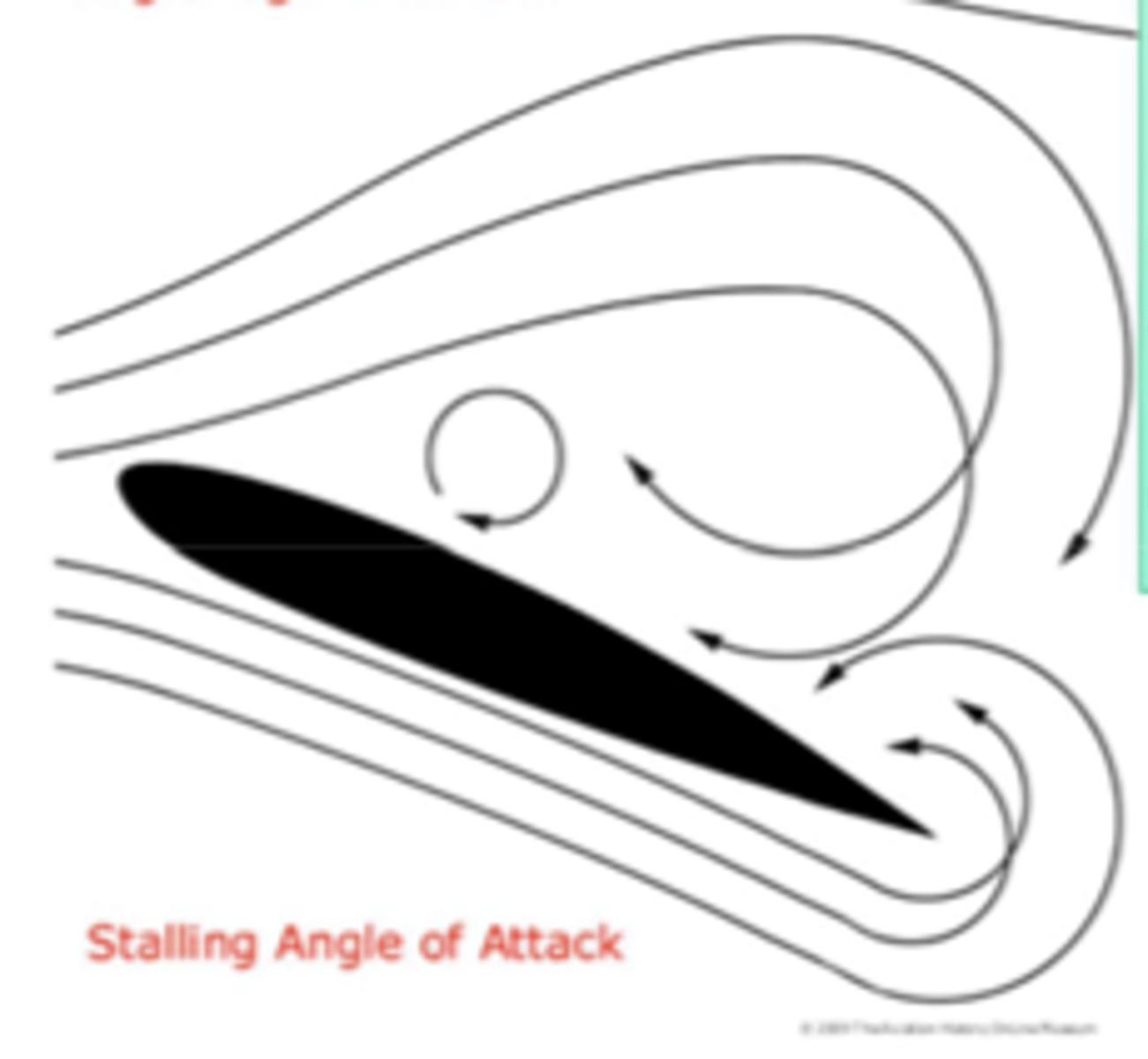
Using the velocity triangle and force vectors to illustrate how a lift-type HAWT generates electricity
pitch angle (chord / direction of rotation) angle of attack (relative wind velocity / chord)φ relative wind angle (relative wind velocity / direction of rotation)
L is perpendicular to W and D is along W. Higher L/D ratio is beneficial for energy generation as shown for Fu.
Fu is in the direction of rotation, pushing the blade around. It is the force generating energy.
Fx does not contribute to energy generation. It exerts a force to push the blade backwards, causing the coning effect.

Assume an ideal incidence is 𝛼 for a blade section aerofoil, how would you change the local pitch angle β from root to tip of a HAWT blade?
For the best performance, the blade must have a large pitch angle β near the root and a small β at the tip (twisted blade)
Explain how the incidence changes with an increase in the wind speed
The angle of attack 𝛼 increases as wind gets stronger
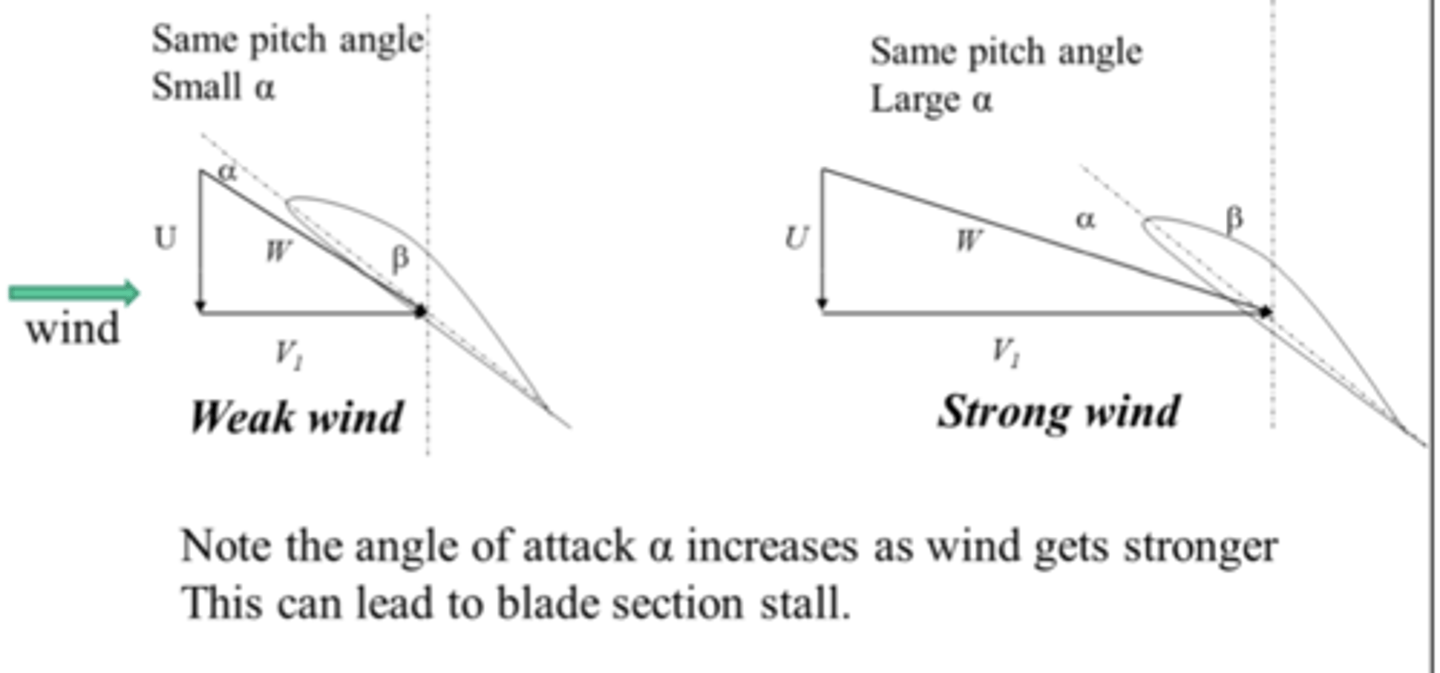
Which span section of the HAWT blade works the hardest in extracting energy from the wind?
The outboard blade is the main contributor to power generator. The tip works the hardest as the pitch angle is the greatest therefore causing more force generation
Give the reason why the blade chord is reduced from the root to tip for a typical large HAWT blade
c is often reduced to limit the blade load near the tip for structural consideration
How does a bi-directional lift-type HAWT work?
A positive thrust Fu in the direction of blade travel (and along the aerofoil axis) is possible as long as L>>D- Operating the same way for wind from either left or right
If the tip speed ratio is 6, what is the maximum incidence of the relative flow to the blade aerofoil for a VAWT?
sin𝛼max = +/- V1/U = +/-1/λ => 9.59 degrees
What are the advantages of VAWTs in comparison with HAWTs?
Operate from any wind direction, the hub can be installed on the ground level - easy maintenance, simpler blade design so manufacturing is more cost effective.
What are the disadvantages of VAWTs in comparison with HAWTs?
Difficult to self start, torque ripple and oscillatory radial force due to unsteady aerodynamic forces even for steady wind, blade optimisation is more challenging due to unsteady conditions.
Explain why VAWTs are prone to self starting problems
As the blade rotates 𝛼 can become very large as it varies between +/-90°, leading to blade dynamic stall
Using velocity and force components, show how a VAWT blade section generates torque at azimuth angle 𝜽=90°
Fu pushes the blade in the rotation direction
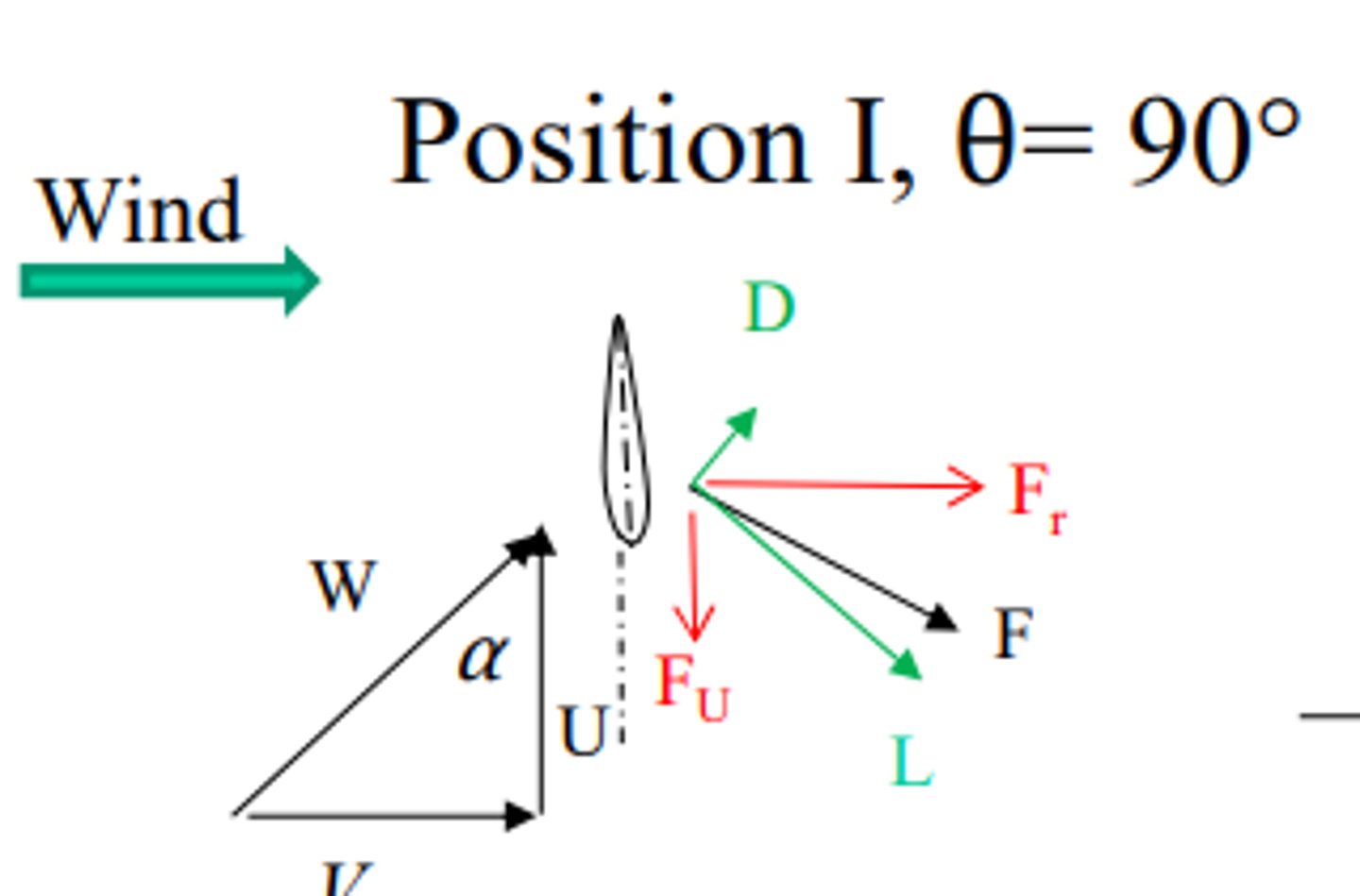
Show why the blade is not helping for a chosen azimuth angle on the downwind side
Fu pushes the blade in the opposite direction
Explain how stall regulation works at higher wind speed for HAWT.
List the strategies for over-speed avoidance
Why are the actual aerodynamic forces acting on a HAWT rotor blade unsteady?
What are the cut-in, cut-out and rated wind speed?